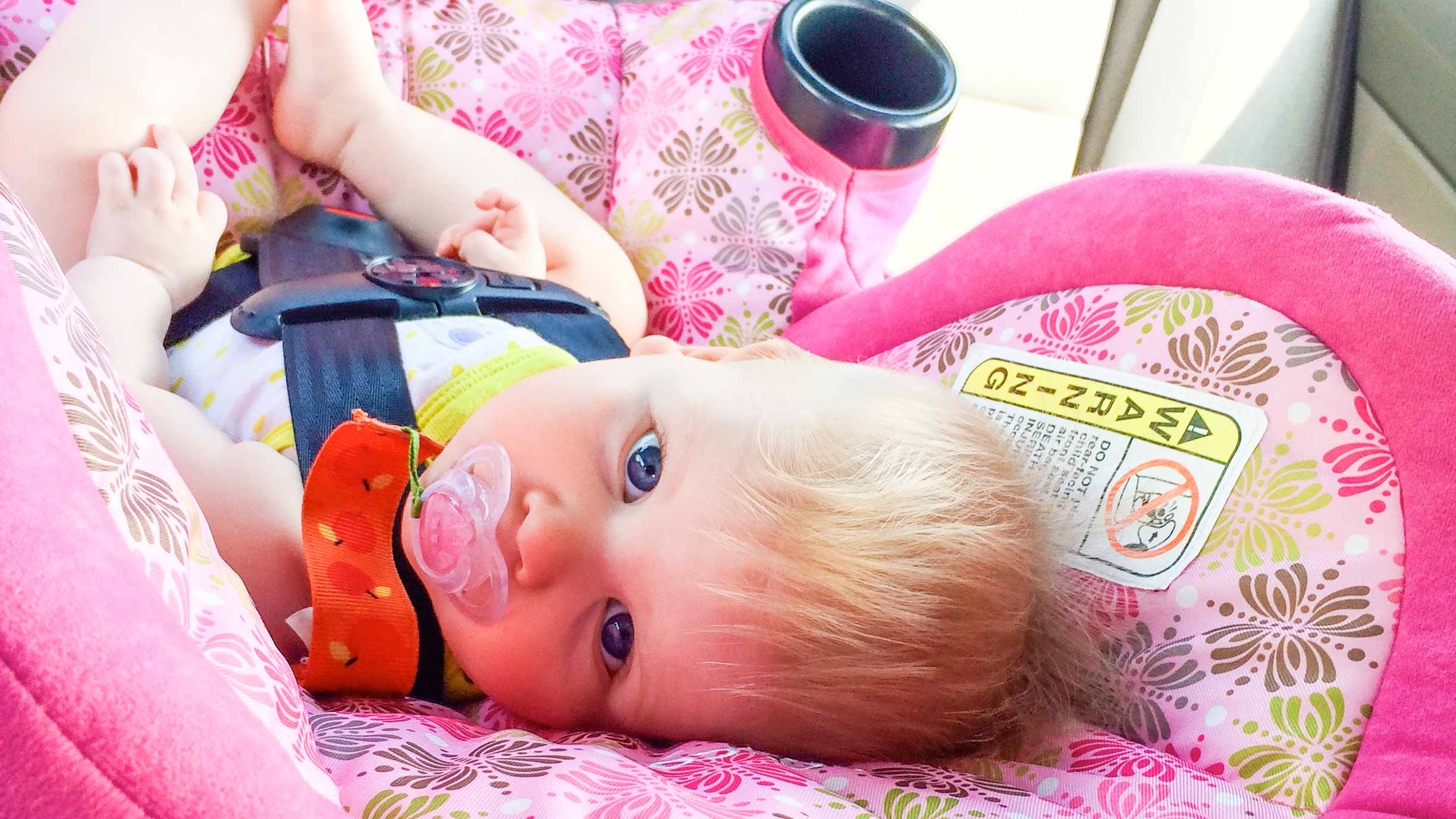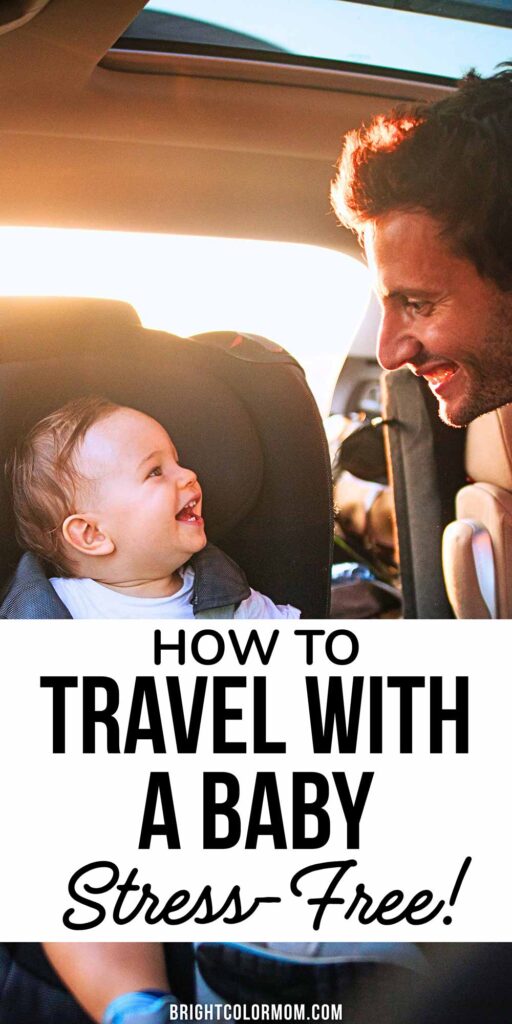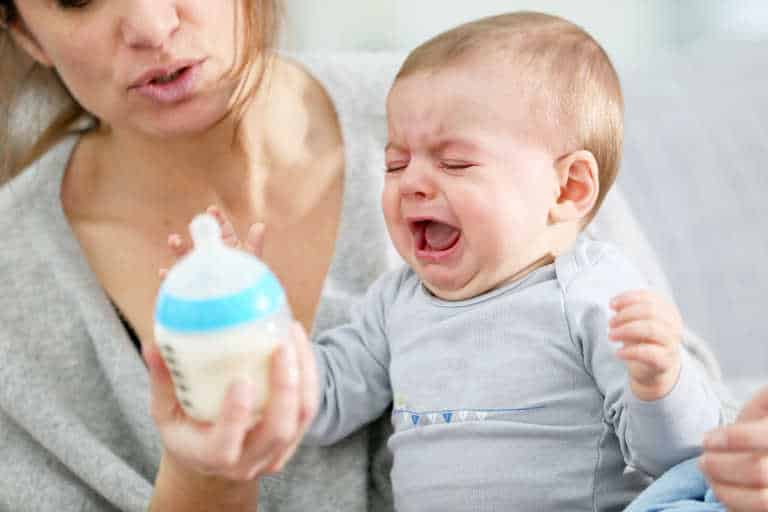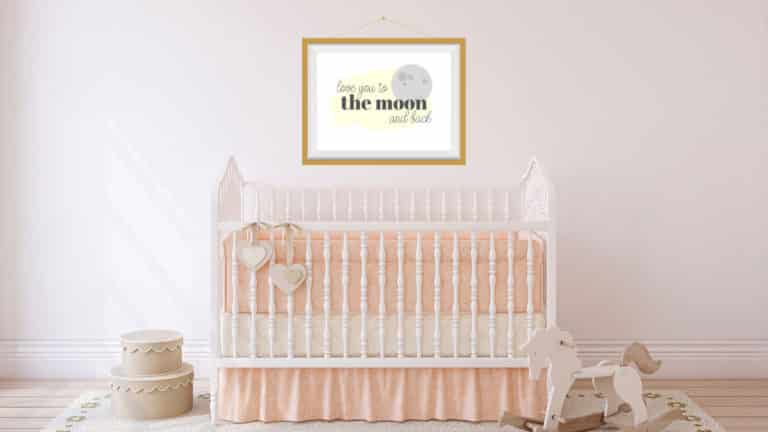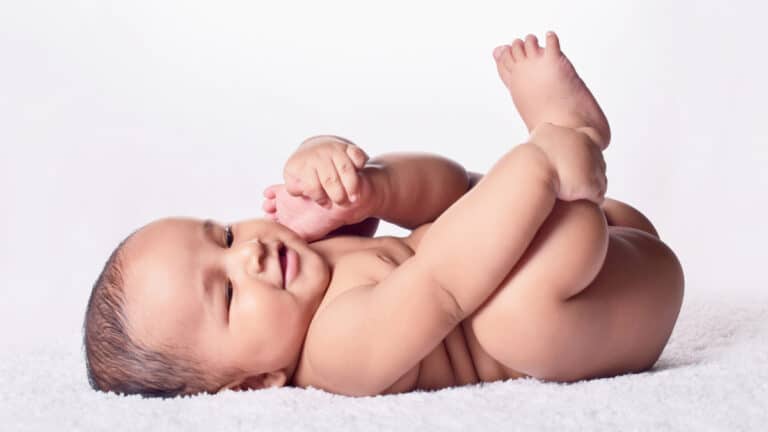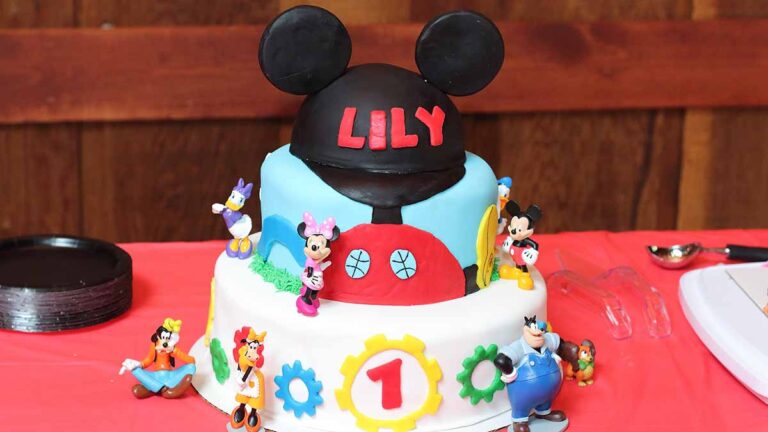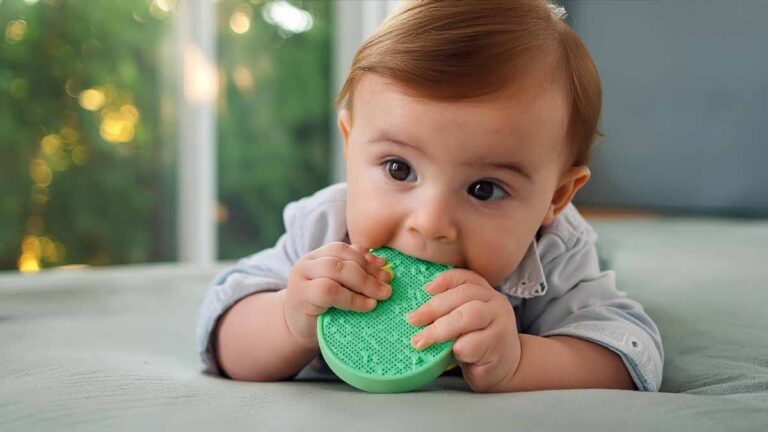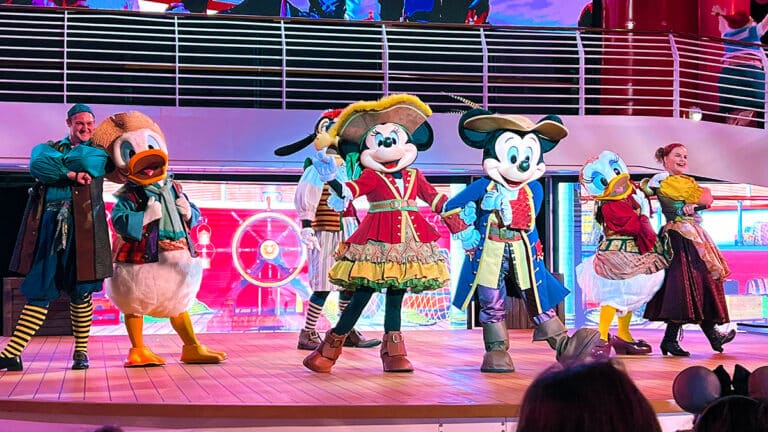Traveling with a baby isn’t impossible. It’s just different. And a little more… logistical. Whether you’re heading out on a road trip with baby or braving a red-eye flight, this guide covers everything you need to plan a smooth, meltdown-minimized adventure. This advice on how to travel with a baby is for new parents by someone who’s been there – me!
From crying on a plane to forgetting a cherished plushie back at home, I’ve dealt with it all. Our family has traveled at least once a year, every year, since my oldest turned one. The good news is that it gets easier each time.
When you travel with an infant, there are a LOT of logistics involved. Road trips can be daunting, and flying with an infant on a plane can be downright nerve-wracking with so many other people enduring the process with you. Let me share my baby travel hacks so you can vacation with your baby or travel with your newborn worry-free.
When You Can Start Traveling with a Baby
Pre-term babies need to be well past their actual due date before you consider traveling. If your baby was born full-term, though, and doesn’t present any health issues, you can safely start traveling a week later!
That said, many experts still recommend waiting as long as possible to travel – until the baby is at least a few months old. This has less to do with you and your baby’s physical abilities to travel and more to do with the risk of contracting illness. The older your baby is, the more vaccinations they will likely have had, giving them more protection against what’s out there.
The Best Age to Travel with Baby
Sure, you can travel with your baby pretty much any time you want. That doesn’t mean you should, of course. In my opinion, the best age to begin traveling with your baby is around 6 months old. Here’s why:
- Baby is probably sitting up with solid neck strength, making high chairs, strollers, and baby-wearing easier.
- They’ll be more aware of their surroundings and interactive with what they see.
- Feedings are far less frequent than when they were newborn.
- Starting solids means you can quickly distract them with snacks when they get fussy!
- Both of you are probably getting better sleep so you can recharge for each day of adventure.
- A lot of important vaccines should have been given by this time.
- Your postpartum recovery should be mostly complete.
The Planning Stage
Consider Your Destination
Stick to places with good medical access, baby-friendly lodging, and a slower pace. Think nature getaways, beach towns with stroller-friendly boardwalks, or cities with walkable parks and family-friendly restaurants.
- Avoid destinations with extreme climates or poor sanitation.
- Check CDC travel recommendations for infants.
- For international travel, make sure your baby has a passport (yes, even newborns need one). Take their photo while they’re lying down on a white blanket. You have to have an in-person appointment with your baby with form DS-11 ready.
- Ask your pediatrician about required vaccines. Some can be given a little bit early if both you and the doc are comfortable with it.
When my children were younger, we stuck to beach vacations in the states for non-essential travel. Florida is decently clean, and we didn’t need travel documents. Once, when my son developed an ear infection mid-vacay, we were able to get treatment at a nearby urgent care at a reasonable out-of-pocket cost.
Best Places to Travel with a Baby
Need help deciding where you want your adventure to be? Here are some of the best places to take a baby.
- National parks: many have stroller-friendly trails
- Beach towns: babies love the sand and water
- Lakes: usually easy to get to and very peaceful
- Family resorts: most offer nurseries/clubs so you can have baby-free fun
- Disney World: babies get in for free and can ride a LOT of rides!
Time it Wisely
Babies have internal clocks. Mess with them too much, and chaos ensues. If you’re driving the whole way, start the trip a little before baby’s normal bedtime. They’ll sleep through the hardest part.
For a road trip with a newborn, you can leave any time. My tiny babies slept through most of the drive no matter the time of day. This ended up being both a blessing and a curse, as their schedules sometimes got messed up on vacation. Unfortunately, there’s no way to prevent it as newborns are notoriously difficult to keep awake if they don’t feel like it.
Take your vehicle and car seat to your local police station to make sure it’s properly installed! It’s a free service most stations provide.
If you’re flying, try to fly during nap time or early morning. Avoid red-eyes unless your baby is a miracle sleeper. For long-haul flights, start adjusting naps and bedtimes to gradually shift the schedule to the destination’s time zone. Jet lag can happen in a baby too! Try a slow schedule adjustment. Shift naps by 30–60 minutes per day leading up to your trip. Use natural light strategically. Morning sun helps reset body clocks.
Booking the Best Flight
Here are some quick tips for flying with a baby:
- Direct is best. Every layover adds risk and disruption.
- Long-haul flights usually have seats with a bassinet, so be sure to request one. Some airlines offer them in bulkhead rows. Just check age/weight limits!
- Airline perks: Some airlines allow early boarding or free lap infant travel (up to age 2).
Flying has its own unique set of challenges with a baby in the mix. Be sure to check out all my tips for flying with a baby!
Finding Appropriate Accommodations
While I am not a supporter of AirBnB, I totally understand that it can otherwise be impossible to find a place to stay that has everything you want. Just keep in mind that most hotels will have everything you need. But if possible, I recommend looking for these features, wherever you choose to stay:
- Pack-and-play onsite
- Kitchenette for bottle prep, or at minimum a real fridge for storage
- Laundry facilities
- Low noise levels (even the loudest white noise machine can’t compete with cheerleaders at competition)
Specific location matters, too. With a baby, you may find yourself in need of a grocery store, pharmacy, or pediatric urgent care. Search what’s near a particular hotel or house for rent before booking.
This post may contain affiliate links. If you make a purchase after clicking one, I may receive a small commission at no cost to you.
What to Pack
It’s no secret that babies require a lot of stuff. And since that stuff is expensive, you’re not going to want to have to buy a lot when you reach your destination. I’ve got a whole separate post for my baby travel checklist (with a FREE printable and digital spreadsheet), but are key essentials to bring along:
- A car seat, if flying – do NOT depend on Uber drivers to actually have one! You will need to check this when flying unless you pay for your baby to have a seat on the flight, so grab a travel cover.
- Diapers (at least 1.5x what you think you need)
- Travel baby wipes – you will use them for everything
- Easy-to-pack baby carrier
- Compact/umbrella stroller
- Medications (including OTCs like Tylenol) and a thermometer
- White noise machine
- Baby’s favorite lovey or blanket
- A toy you know is entertaining for your baby
- Formula, bottles, and baby snacks
Pro tip: Bring extra outfits – for both of you. Blowouts respect no boundaries.
If you need help finding the best baby gear for traveling, read my article for my personal recommendations! It’s all about the things you probably don’t already have.
What Not to Pack
It can be tempting to pack up the whole nursery to ensure your baby’s comfort on your trip. That’s truly not necessary! Leave the wipe warmer, bucket of toys, and fancy shoes at home. Don’t bring your nicest stroller or expensive car seat on a flight – they are not guaranteed to be handled with care. And for me, the Boppy pillow was more of a nuisance to haul around than helpful.
Even for tiny babies, the baby bathtub can stay at home. Just take a bath with them in a regular tub and let them lie on your chest while you wash them. If you know where you’re staying only has shower stalls, though, a folding baby bath will be a good investment to pack along.
Has your baby started solids? Wondering how you’re going to feed them without a high chair? You don’t have to! Travel booster seats exist and are a lifesaver with a baby in tow. Use it for feeding, sitting on the plane, or even just having somewhere to put the baby while you do other things with your hands.
Before hauling along the pack-and-play or buying a travel crib, check with the place you’ll be staying to see if they offer them. Most reputable hotels do, and this will save you a huge inconvenience when traveling.
Consider Packing Next to Nothing
It may seem insane to take a trip without your stroller or baby bouncer. However, it is sometimes worth the cost to simply buy these items at your destination. This allows you to travel without cumbersome gear and still use it once you arrive. Additionally, if you have a particularly high-end stroller, buying a cheap one to use for the duration of your trip may be worth not having to risk that more expensive item being stolen.
At Disney World, it’s actually quite a common practice to buy gear at a local Walmart upon arrival. Many families then “pay it forward” by offering their barely-used strollers to families just checking in for their stays. If you’re lucky, YOU could be the family gifted a stroller and you won’t have to buy one at all! Just don’t count on this or expect it to happen.
Handling Bags and Your Baby
If it’s just going to be the two of you on the trip, things can get tricky. But here’s one of the best tips you’ll ever get: ask for help! It’s natural to not trust strangers with your baby, I understand that. But in crowded public settings, particularly airports or restaurants, it’s highly unlikely anyone will try to make off with your little one.
In fact, if you make it a point to ask women – particularly middle-aged women like myself – to hold your baby for a moment, I promise the vast majority will jump at the chance! Not only do we get to hold an adorable squishy baby that we don’t have to take care of for more than a minute, we get to help a sister out in solidarity. It’s a win for everyone.
How to Keep Baby Calm and Comfortable
Some babies are fine in unfamiliar environments, and others are decidedly not. But familiar items can help them feel better. Bring their comfort items: pacifiers, baby blankets, soft toys, and even music they like to hear. When possible, baby-wearing is your best bet at keeping the little one in a good mood.
Road-tripping? Time drives around naps. Stop every 2–3 hours to stretch, feed (yourself and the baby), and do a diaper change. Build in buffer time – always. Every stop will end up taking longer than you expect, I assure you. Assuming you have another adult with you that can drive, I highly recommend sitting in the back next to your baby. They’ll feel comforted by your presence and you’ll be able to replace their pacifier when they spit it out.
Whether flying or driving, bring layers for your baby to make sure they don’t get too hot or too cold. Airplane temps can vary significantly from airport temps.
Sleeping Away from Home
Make your baby’s sleep setup as familiar as possible. For example, place them in the same sleep sack and turn on the same white noise. Use blackout travel shades – or black garbage bags work in a pinch. If you’re staying with family, give baby a quiet corner – not the living room futon next to Uncle Joe’s 3 a.m. snoring session. Keeping the travel crib or pack-and-play next to you is ideal.
For a baby, sleep goes beyond the actual act of lying down and closing your eyes. Try to keep your whole routine the same: bath, book, song, then put-down, or whatever your routine usually is. Those familiar steps go a long way in making a baby feel like they’re still at home.
If using a travel crib, try a practice nap before you go. You’ll have an idea of how the baby reacts to it, but it’ll also be less strange to them the next time you put them in it. The first time I traveled with my oldest, then just one year old, we got her a Minnie Mouse inflatable mattress. I let her sleep on it in her room at home before we took it on vacation. With the rest of her sleep routine the same, she had no issues!
As far as naps go, let it go. Your baby will fall asleep when they are tired while out and about, even in a little umbrella stroller. Trying to craft perfect itineraries where your baby can nap in a pop-up bed will drive you insane. Go with the flow – you’ll end up with great memories and forget all about any missed naps.
Feeding on the Go
Whether you’re breastfeeding, bottle-feeding, or combo-feeding, prep is key. Request fridges in hotel rooms for breast milk or prepared formula. Ice packs are a no-go – most hotels don’t provide fridges cold enough to freeze them. Instead, bring a small cooler bag and Ziplocs to keep loose hotel ice in. You can replace the ice every morning and don’t have to remember to freeze anything at night.
Travel bottle warmers are a must, and you might want to bring a battery-powered one with you. But some destinations have them available. For example, Disney World has Baby Care Centers where you can warm up your bottles! Research what might be available to you where you’re going.
If baby’s on solids, pack shelf-stable pouches and disposable bibs. If you bring jarred foods, don’t forget baby spoons and forks! These are allowed by TSA as long as the forks have very rounded tips, which baby forks do. For me, flavored puffs were the easiest thing to carry around when sightseeing and won’t go bad in the cold or heat. I usually only fed my babies table food they could handle while we were out in addition to their formula.
Baby-Proofing a Hotel Room
Assuming you’ll be spending at least a little bit of downtime in your hotel, you have to consider all available hazards. These are things I always took with me for the guaranteed problems:
- Outlet covers
- Window blind cord winders
- Painter’s tape (for securing lamps, phones, etc. to tables)
- Cabinet and dresser drawer latches
- Corner guards
- Door pinch guards
Getting Back to Normal Back Home
I won’t lie to you – traveling with a baby can be pretty exhausting. Your first day home, only worry about unpacking the essentials. (This will mostly be baby items.)
Don’t expect your baby to be back on their regular schedule right away. Try to nudge them back into their old schedule, but be kind: don’t try to keep them awake if it’s not “time” for a nap. You can expect as many days to get back on track as the number of time zones you traversed!
The good news is, after your first trip with your baby, you’ll have a lot more knowledge to apply to your next adventure together. Traveling with a baby is part challenge, part comedy, and part escapade. You’ll forget something, you’ll get spit up on, and you’ll still be glad you went.
You’ve got this. Really.

